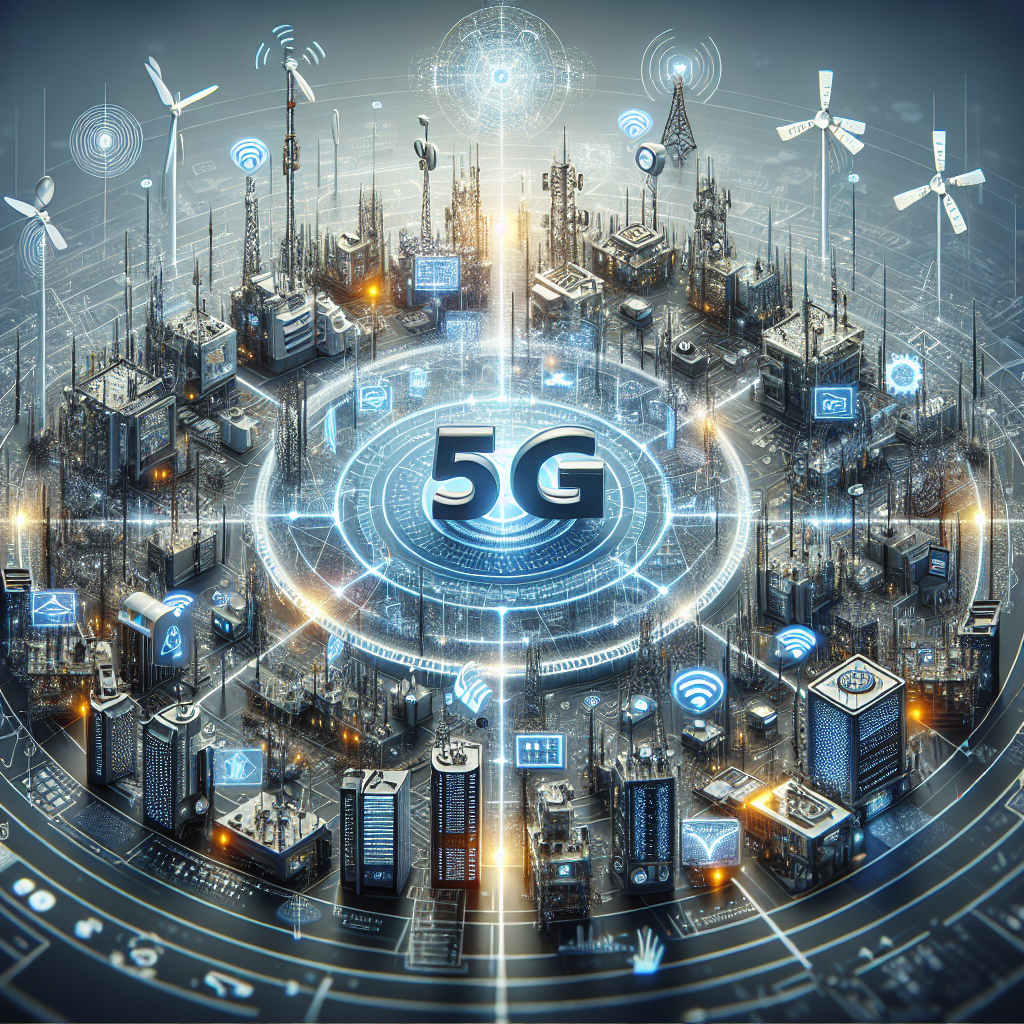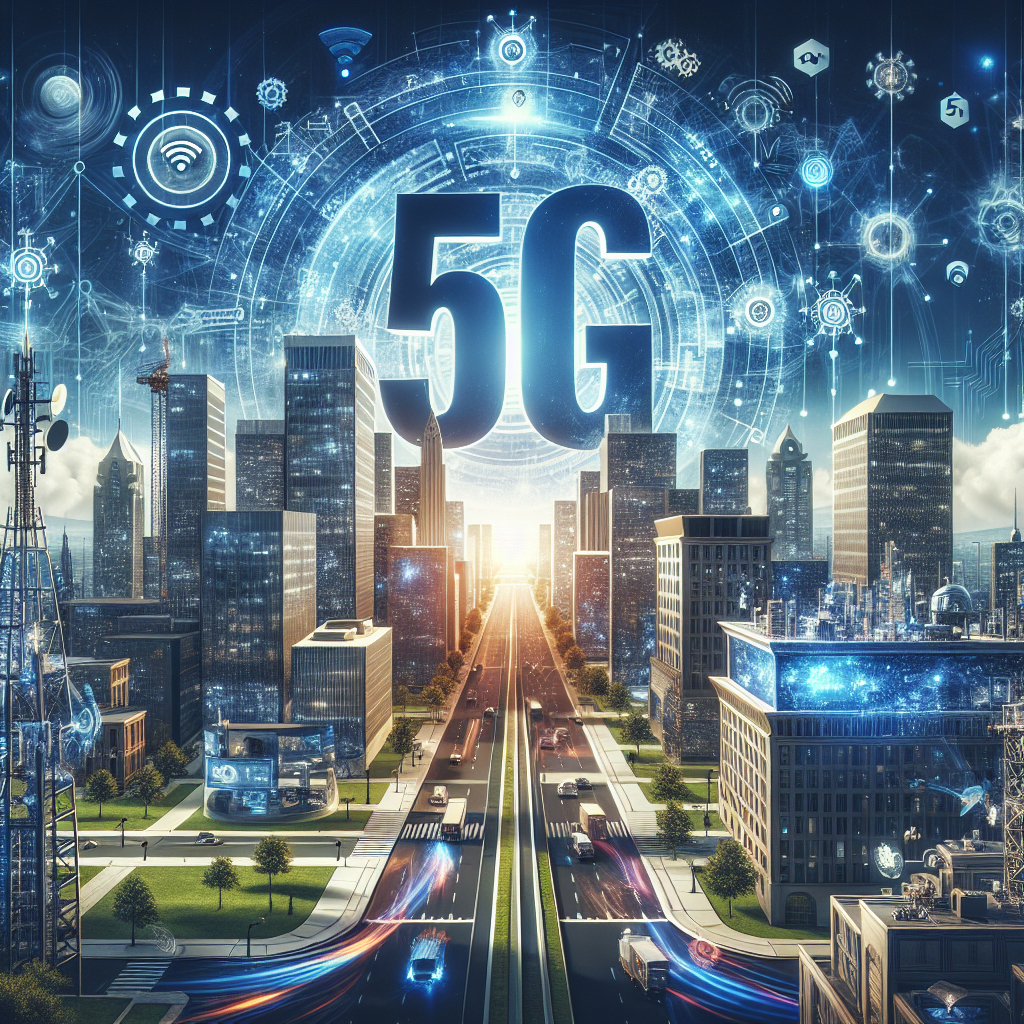In today’s rapidly evolving digital landscape, the emergence of 5G technology has sparked a revolution in the field of data analytics. With its lightning-fast speeds and incredibly low latency, 5G technology is poised to drastically enhance the way data is collected, analyzed, and utilized. The impact of this game-changing technology on data analytics is nothing short of transformative, opening up new possibilities for businesses to optimize their operations, gain valuable insights, and make better informed decisions. Join us as we delve into the groundbreaking implications of 5G technology on data analytics and explore the immense potential it holds for the future.
Understanding the Basics of 5G Technology

Overview of 5G Technology
5G technology represents the fifth generation of mobile networks, offering significant advancements over its predecessors. It is designed to provide faster data speeds, lower latency, increased network capacity, and improved reliability compared to 4G LTE networks. This technology is set to revolutionize various industries by enabling the seamless connectivity of a vast number of devices simultaneously.
Key Features and Capabilities of 5G Networks
-
Enhanced Speed: 5G networks are capable of delivering data speeds up to 100 times faster than 4G LTE networks, with the potential to reach multi-gigabit per second speeds. This rapid data transfer rate enables real-time data analytics and quick decision-making processes.
-
Ultra-Low Latency: One of the most significant features of 5G technology is its ultra-low latency, which reduces the delay in data transmission to as low as 1 millisecond. This near-instantaneous response time is crucial for applications like autonomous vehicles, remote surgery, and augmented reality.
-
Massive Network Capacity: 5G networks have the ability to support a massive number of connected devices within a small geographical area. This increased network capacity is essential for the Internet of Things (IoT) ecosystem, where billions of devices are expected to be interconnected.
Comparison with Previous Generations of Mobile Networks
When compared to previous generations of mobile networks, such as 3G and 4G, 5G technology offers unparalleled speed, capacity, and reliability. While 4G networks paved the way for mobile broadband, 5G takes connectivity to a whole new level by providing a platform for innovation in various sectors, including healthcare, manufacturing, transportation, and entertainment.
The Intersection of 5G Technology and Data Analytics
5G technology is poised to revolutionize the field of data analytics by providing unprecedented speed, capacity, and connectivity for processing vast amounts of data in real-time. The integration of 5G networks with data analytics platforms opens up a new realm of possibilities for businesses and industries looking to harness the power of data for decision-making and innovation.
How 5G Technology Enhances Data Analytics Processes
-
Ultra-Fast Speed: 5G technology offers significantly higher data transfer speeds compared to its predecessors, enabling data analytics processes to be completed at lightning-fast speeds. This allows for quick data processing, analysis, and insights generation, leading to more agile and informed decision-making.
-
Low Latency: One of the key advantages of 5G technology is its low latency, which reduces the delay in data transmission. This near real-time connectivity is crucial for data analytics applications that require instant feedback and response, such as autonomous vehicles, remote healthcare monitoring, and industrial IoT systems.
Leveraging High-Speed Connectivity for Real-Time Data Analysis
-
Real-Time Data Processing: With 5G technology, organizations can analyze data as it is generated, allowing for real-time insights and immediate actions based on the most up-to-date information. This capability is particularly valuable in dynamic environments where quick decision-making is essential.
-
Improved Data Collection: The high-speed connectivity of 5G networks facilitates the collection of large volumes of data from various sources, including IoT devices, sensors, and connected machinery. This influx of data can be effectively processed and analyzed in real-time to extract valuable insights and patterns.
Integration of 5G Networks with Big Data Analytics Platforms
-
Scalability: 5G technology enhances the scalability of big data analytics platforms by supporting the processing of massive datasets across distributed systems. This scalability is essential for handling the ever-increasing volume, velocity, and variety of data generated in today’s digital world.
-
Enhanced Data Security: By integrating 5G networks with big data analytics platforms, organizations can ensure secure and reliable data transmission and storage. Advanced encryption protocols and secure data handling mechanisms can be implemented to protect sensitive information and maintain data integrity throughout the analytics process.
In conclusion, the intersection of 5G technology and data analytics represents a paradigm shift in how data is collected, processed, and utilized. By leveraging the high-speed connectivity and capabilities of 5G networks, businesses can unlock new opportunities for innovation, optimization, and competitive advantage in the data-driven era.

Advantages of 5G Technology for Data Analytics
Faster data transfer speeds and reduced latency
5G technology offers significantly faster data transfer speeds compared to its predecessors, enabling real-time data processing and analysis. This rapid transmission of data allows organizations to make quicker decisions based on up-to-the-minute information. Moreover, the reduced latency in 5G networks ensures that data analytics processes are more responsive and efficient, leading to improved overall performance.
Improved network reliability and stability
One of the key advantages of 5G technology for data analytics is its enhanced network reliability and stability. 5G networks are designed to handle large amounts of data traffic without compromising performance, ensuring that data analytics processes run smoothly without interruptions. This reliability is crucial for organizations relying on continuous data analysis to drive their decision-making processes.
Enhanced scalability for handling large volumes of data

Another significant advantage of 5G technology in the realm of data analytics is its enhanced scalability. 5G networks are capable of supporting massive amounts of data generated by various sources, including IoT devices, sensors, and other data-generating technologies. This scalability enables organizations to analyze vast volumes of data efficiently, providing valuable insights and driving innovation across industries.
Challenges and Limitations in Implementing 5G for Data Analytics
-
Security concerns with increased data transmission
Implementing 5G technology for data analytics poses significant security challenges due to the higher volume and speed of data transmission. With faster data transfer rates, there is an increased risk of cyber-attacks, data breaches, and unauthorized access. Securing data transmitted over 5G networks requires robust encryption protocols, secure authentication mechanisms, and continuous monitoring to detect and mitigate potential security threats in real-time. -
Compatibility issues with existing data analytics infrastructure
Integrating 5G technology into existing data analytics infrastructure can be complex and challenging. Many organizations may face compatibility issues between their current analytics systems and the requirements of 5G networks. Upgrading software, hardware, and network components to support 5G data transmission may require significant investments in technology and resources. Ensuring seamless compatibility and interoperability between 5G networks and data analytics platforms is crucial to realizing the full potential of this revolutionary technology. -
Cost implications of transitioning to 5G networks for data analysis
Transitioning to 5G networks for data analytics comes with substantial cost implications for organizations. Deploying 5G infrastructure, upgrading data analytics systems, and training personnel on new technologies can incur significant expenses. Moreover, the ongoing operational costs of maintaining and optimizing 5G networks for data analytics add to the financial burden. Organizations need to carefully evaluate the return on investment in adopting 5G technology for data analytics and develop cost-effective strategies to leverage the benefits of faster data processing and analysis capabilities.
Opportunities for Innovation in Data Analytics with 5G Technology
- Utilizing Edge Computing for Decentralized Data Processing
Leveraging 5G technology enables data analytics to shift towards edge computing, where data processing occurs closer to the data source. This proximity reduces latency, allowing for real-time analysis and decision-making. By distributing computational tasks across edge devices, organizations can enhance data security, improve scalability, and optimize resource utilization. This decentralized approach to data processing opens up new possibilities for innovative analytics applications in various industries, such as autonomous vehicles, healthcare monitoring, and smart cities.
- Implementing AI and Machine Learning Algorithms for Predictive Analytics
The high-speed and low-latency capabilities of 5G networks empower data analytics to harness the full potential of artificial intelligence (AI) and machine learning (ML) algorithms. With faster data transmission rates, organizations can train and deploy complex predictive models in real-time, leading to more accurate insights and actionable recommendations. By integrating AI and ML into data analytics workflows, businesses can automate decision-making processes, detect patterns in vast datasets, and forecast future trends with unprecedented accuracy. This convergence of 5G technology and advanced analytics paves the way for predictive maintenance, personalized customer experiences, and dynamic pricing strategies.
- Exploring IoT Applications in Conjunction with 5G Networks for Data Insights
The synergy between the Internet of Things (IoT) devices and 5G networks revolutionizes data analytics by enabling seamless connectivity and data exchange on a massive scale. By harnessing the power of 5G-enabled IoT devices, organizations can collect real-time data from various sensors, devices, and equipment, creating a rich source of information for analytics purposes. This interconnected ecosystem facilitates the generation of actionable insights, monitoring of operational processes, and optimization of resource utilization. With 5G technology supporting IoT applications, data analytics can delve into predictive maintenance, supply chain optimization, and environmental monitoring with unparalleled efficiency and accuracy.
Future Trends and Impacts of 5G on Data Analytics
The evolution of data analytics tools and techniques with 5G advancements has paved the way for a significant transformation in the data analytics landscape. Leveraging the high-speed, low-latency capabilities of 5G networks, data analytics processes are becoming more efficient and powerful than ever before.
-
Enhanced Data Processing: With the increased bandwidth and speed offered by 5G technology, data analytics tools can process vast amounts of data in real-time, enabling organizations to derive insights and make informed decisions swiftly.
-
Improved Data Accessibility: 5G technology facilitates seamless data access from various sources, including IoT devices and sensors. This accessibility enhances the quality and quantity of data available for analysis, leading to more comprehensive insights and predictions.
-
Real-Time Decision-Making: One of the most profound impacts of 5G on data analytics is the ability to enable real-time decision-making. With minimal latency in data transmission, organizations can make critical decisions instantly, responding promptly to changing market conditions and consumer preferences.
-
Personalized Data Insights: The combination of 5G technology and advanced data analytics techniques enables the generation of highly personalized insights for individual users. By analyzing data in real-time and tailoring recommendations based on specific preferences and behaviors, organizations can enhance customer experiences and drive engagement.
-
Industry Transformation: The optimization of data analytics processes through 5G technology is reshaping various industries, including healthcare, manufacturing, finance, and retail. Organizations across sectors are leveraging the power of real-time data analytics to streamline operations, improve efficiency, and deliver superior products and services to customers.
In conclusion, the integration of 5G technology with data analytics is driving a new era of innovation and efficiency, revolutionizing how organizations analyze, interpret, and utilize data to gain a competitive edge in today’s dynamic market landscape.
FAQs: Exploring the Revolutionary Impact of 5G Technology on Data Analytics
How will 5G technology impact data analytics?
5G technology is set to revolutionize the field of data analytics by enabling faster speeds, lower latency, and increased network capacity. This will allow for real-time data processing and analysis, empowering businesses to make quicker decisions based on up-to-date information. With 5G, data analytics will become more efficient and effective, ultimately leading to better insights and outcomes.
What are some key benefits of using 5G technology for data analytics?
Some key benefits of using 5G technology for data analytics include improved data processing speeds, enhanced data security measures, and the ability to handle larger volumes of data. Additionally, 5G technology enables the seamless connection of various devices and sensors, providing a more comprehensive and real-time view of data. This will result in more accurate predictions and better decision-making processes for businesses.
How will 5G technology impact the Internet of Things (IoT) and data analytics?
5G technology will greatly impact the IoT landscape by providing the necessary infrastructure to support the massive amounts of data generated by IoT devices. With faster speeds and lower latency, 5G will enable seamless communication between IoT devices and data analytics platforms, allowing for more efficient data collection and analysis. This will lead to more accurate insights from IoT data and help businesses derive greater value from their IoT investments.
What challenges may arise with the integration of 5G technology into data analytics?
While the benefits of integrating 5G technology into data analytics are substantial, there are also challenges that may arise. These include concerns about data privacy and security, as the increased speed and capacity of 5G networks may make data more vulnerable to cyber threats. Additionally, businesses may face the challenge of integrating 5G technology with existing data analytics infrastructure, requiring investment in new technologies and updated processes.
How can businesses prepare for the adoption of 5G technology in data analytics?
To prepare for the adoption of 5G technology in data analytics, businesses should assess their current data analytics capabilities and infrastructure to identify areas that may need to be upgraded or modified. They should also stay informed about the latest developments in 5G technology and how it can benefit their data analytics efforts. Additionally, businesses should invest in staff training and education to ensure that their teams are equipped to make the most of the new opportunities presented by 5G technology in data analytics.


